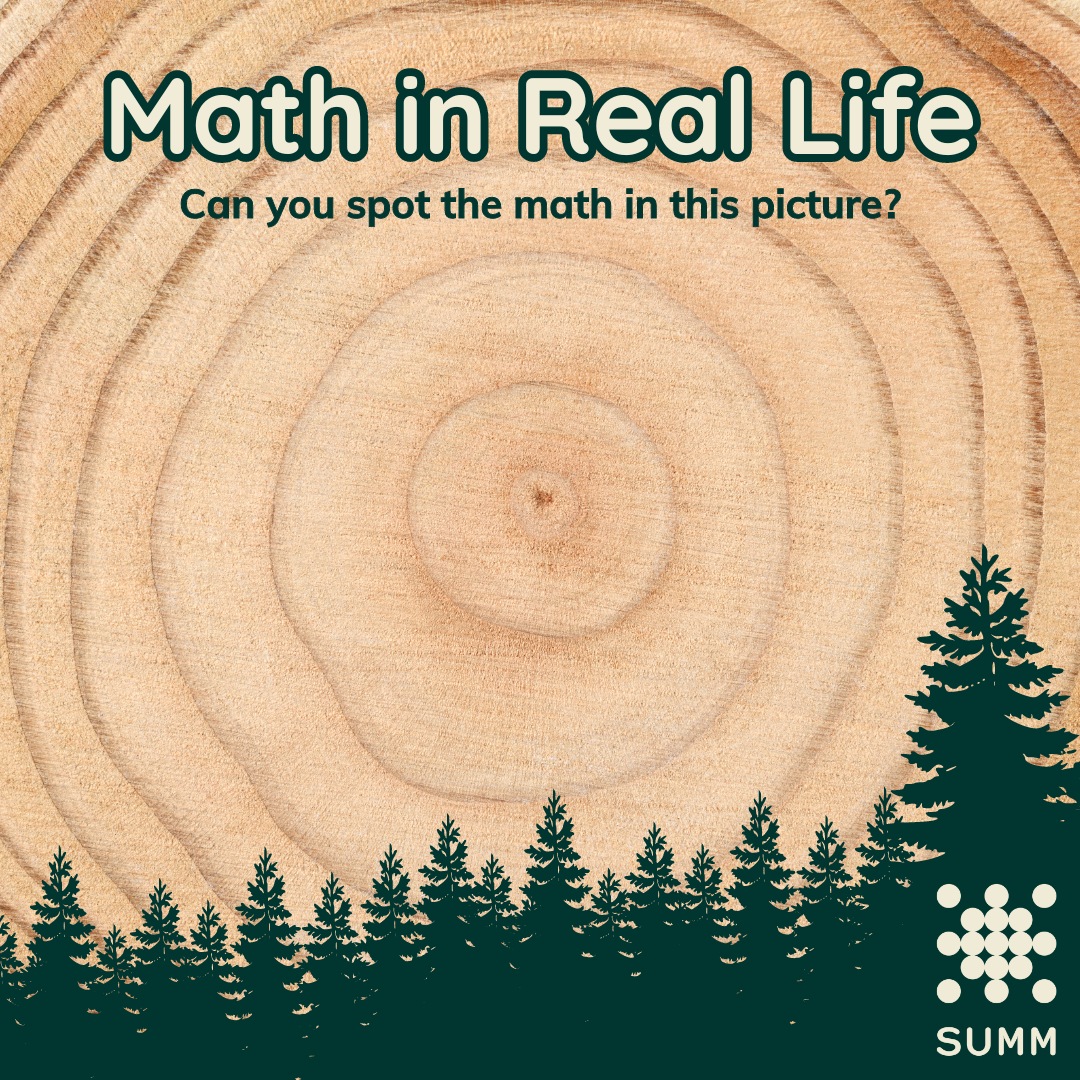Math in… Tree Rings
In the spring, trees grow more quickly, and the early wood they produce is less dense and lighter in color.
Through the summer and autumn, their growth rate slows, and the late wood produced is denser and darker.
The cycle of the seasons creates a cycle of early wood and late wood, which we see as tree rings. In normal circumstances, the rings are periodic with one new ring per year, so counting the dark bands gives us a way to approximate a tree’s age.
Since a tree’s growth rate is roughly a function of its region’s climate, weather irregularities can result in missing or extra rings. Tropical regions don’t have a seasonal cycle outside of wet and dry, so their trees often have no rings!

